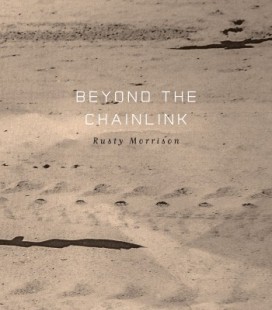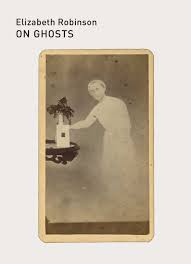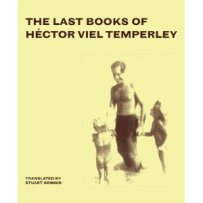Beyond the Chainlink
by Rusty Morrison (Ahshata Press, 2013)
A reflection by Casey McAlduff
Rusty Morrison’s latest work, Beyond the Chainlink (Ahshata Press, 2013), is a beautiful exploration of the edge. By imposing a sequence of repeated forms and employing a speaker who is concerned with the way that language ravels and unravels into and out of meaning, Beyond the Chainlink brings the reader on a journey whose departure points are constantly shifting, thus allowing for the emergence of new perspective in every careful line. Take this piece of lyric, for example, which by utilizing the charge of language’s implicit negativity astutely mimics the way the minds grasps for knowledge, reminding the reader that this knowledge—amazingly, absurdly—comes not from what is, but from what’s not:
“Comprehension is as circular as sky
coming around to white, which is not the color of this painted ceiling.”
(“Backward rowing,” p.19)
Throughout her work, Morrison studies the relationship between language & what’s lost (or concealed) beneath it—the poet deftly investigates the chasm of space between representation and object, that indefinable void we come from—[we imagine]—& that place we may or may not depart back into. To respect the reality of the unknown by allowing it to remain unknowable is no easy feat, but the poet of Beyond the Chainlink manages to render these “visions of difficult grace”, as Dan Beachy-Quick calls them, with a skillful, soft hand. Rather than be thrown off or put under by these visions, the reader is instead coaxed into a state of rebellious recognition that life is “our particular discontinuity” and that “our only continuity/ division/forever unified” is death, is the unknown (Inger Christensen, translated by Susanna Nied, quoted throughout Part One of Beyond the Chainlink). Because Morrison refuses to defile the unknown with definition, the book opens us; we are moved beyond the boundary of our ideas, beyond the chainlink of language.
One way that Beyond the Chainlink succeeds in opening the reader’s mind is to call into question the processing of thought and our tendency to churn ideas into the assumption of knowledge. Rather than land on any certain conclusion, Morrison asks her reader to reach for an answer and to continue reaching—for if definition is reached then so, too, is an unjust ending. The book confronts language and naming throughout, but its wariness of the concept shines through especially in these moments: “Failure is any saying,” (from “History of Quiet”, p. 57-59) and “No help from explanation which always behaves badly/ Squirming in its fictive seat” (Backward rowing, p. 63).
But for a poet as thoughtful as Rusty Morrison, drawing attention to the unreliability of language is not enough; it’s too easy. Instead, Morrison asks us to go farther, to reflect further inward and outward: we are asked as readers not only to doubt language’s ability to approximate its subject, but also to simultaneously hold the attempt in regard, to recognize its significance while noting its absurdity. In “Vulnerability says,” the poet poses the question that all writers must contend with: “What should be kept,” she asks, “besides compassion for the vanity of idea?” (p. 43).
This question at once reprimands our desire for acknowledgement and hails it—“the vanity of idea” is both what confines our existence but also what preserves it. In this one, complex confrontation with language, Morrison reminds us that our inability to know anything for sure is also—paradoxically—our one knowable shortcoming, perhaps our most significant shared trait.
In Beyond the Chainlink, we are “all sailors in our intricate sentence, no captain,” we are left to contend with life as “a study of what strands us” (“History of sleep, p. 6). This brilliant line of verse points toward the crucial irony of our makeup—that what connects us (threads us with our elemental filaments, gives us form, our text) is also what abandons us:
“While meaning fills its fact, let’s play a little lottery
with what’s missed.
Words are such a thickness.
Stranding us between too much and too much.”
(“Backward rowing,” p. 71)
There are many reasons to read Beyond the Chainlink, but for me the reason lies in the work’s refusal to stop digging, its refusal to stop searching despite the recognition that it will never find. “Good stories/ know how to leave the point behind/ many times,” and Morrison keeps us bending backwards, from the space of the beyond (p. 41).
A note on form:
Like most of Morrison’s previous work, Beyond the Chainlink engages with serial form and invokes meditative technique to imbue the work with a particular clarity and depth. This style of Morrison’s “restores the energy of telegraphic communication, launching line after line toward a potentially infinite horizon of meaning,” (Peter Gizzi, on the poet’s earlier work the true keeps calm biding its story).
Beyond the Chainlink is composed of what feels like sets of thought-exercises: there are 7 poems entitled “History __________” (of sleep, of expression, is hidden fact, of seed, of exposition, of quiet, of structure); 7 poems entitled, “____________ says” (impulse, desire, guile, impatience, vulnerability, patience, grace); 6 poems called “Necessities”; 6 poems called “Inventions”; 11 titled “Sensework”; 9 called “Backward Rowing”; and 2 “Begin Again”.
“We die because we cannot connect the end to the beginning,” notes one of the book’s epigraphs from Alcmaeon of Croton, 5th Century BC. And so the book, which does not connect the end to the beginning, which can only hint at circularity (the forms repeat, but they do not repeat in a precise, symmetrical cycle) mimics death and, in so doing, achieves “our only continuity/ division/forever unified.”








